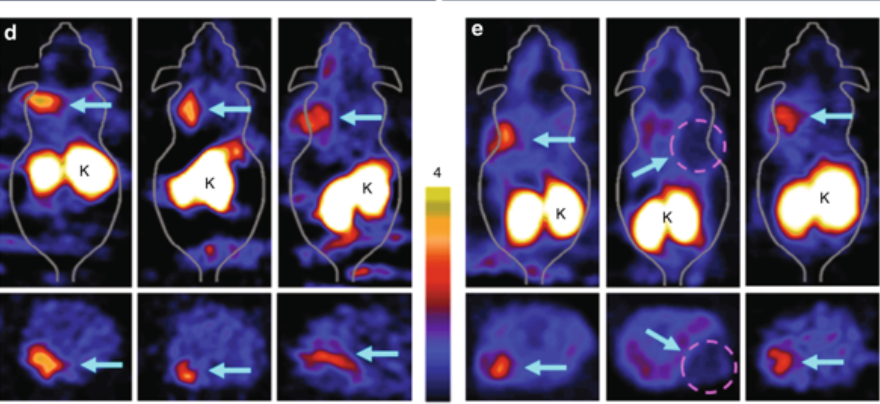Stanford’s Sanjiv Gambhir has developed an imaging molecule that can identify pancreatic, cervical and lung cancer early– and, surprisigly, hard-to-detect idiopathic pulmonary fibrosis. The tracer clings to integrin alpha-v beta-6. In a PET scan, the tracer glows due to radioactivity emissions, which allows doctors to see exactly where the tracer is docked in the body.
A small clinical trial included patients healthy and cancer or IPF patients. The results indicated the tracer is accurate and has disease detection potential.
Join ApplySci at the 12th Wearable Tech + Digital Health + Neurotech Boston conference on November 14, 2019 at Harvard Medical School featuring talks by Brad Ringeisen, DARPA – Joe Wang, UCSD – Carlos Pena, FDA – George Church, Harvard – Diane Chan, MIT – Giovanni Traverso, Harvard | Brigham & Womens – Anupam Goel, UnitedHealthcare – Nathan Intrator, Tel Aviv University | Neurosteer – Arto Nurmikko, Brown – Constance Lehman, Harvard | MGH – Mikael Eliasson, Roche – Nicola Neretti, Brown – R. Jacob Vogelstein, Camden Partners
Join ApplySci at the 13th Wearable Tech + Neurotech + Digital Health Silicon Valley conference on February 11-12, 2020 on Sand Hill Road featuring talks by Zhenan Bao, Stanford – Rudy Tanzi, Harvard – Shahin Farshchi – Lux Capital – Sheng Xu, UCSD – Carla Pugh, Stanford – Nathan Intrator, Tel Aviv University | Neurosteer – Wei Gao, Caltech – Mikael Eliasson, Roche – Dror Ben-Zeev, University of Washington – Sergiu Pasca, Stanford
